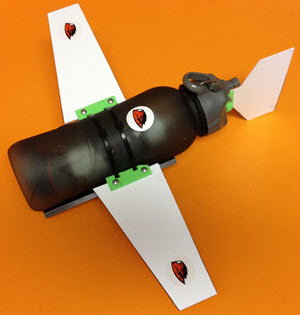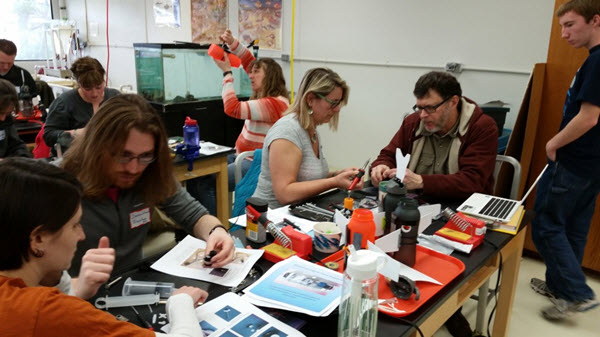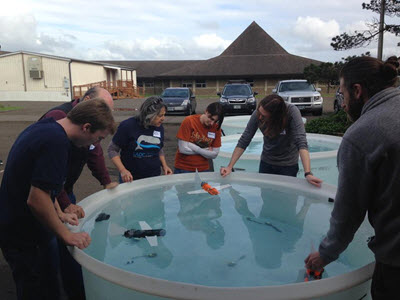Twenty teachers turn water bottles into mini SeaGliders

Photo and Story Credit: LADC-GEMM
The research and science behind projects like Littoral Acoustic Demonstration Center – Gulf Ecological Monitoring and Modeling (LADC-GEMM) can often seem high-brow, inaccessible, and even confusing. So, one of the ways the LADC-GEMM project aims to demystify ocean science is by using the popularity of robotic ocean gliders – like our charismatic “Otis” and “Clyde” – to engage teachers and students in exploring many of the essential skills and principles of the kind of work that is becoming more commonplace in the marine sector.
“What are underwater gliders and how are they used by scientists to study the ocean and its inhabitants?” is a simple question that opens up many avenues for exploration. But the most fun and accessible is actually building a working model of a seaglider. Recently, 20 elementary through high school, in and out-of-school, educators from around the state of Oregon came to the Hatfield Marine Science Center in Newport, Oregon to spend a Saturday doing just that. During the SeaGlide Educator Workshop, they also heard directly from LADC-GEMM scientists how gliders are being used in their research and were treated to a presentation by Toledo, Oregon, high school students who had already spent a school term building their own simple versions and analyzing real data collected by gliders used in recent field work. This gave the workshop participants the opportunity to see how curricula can be developed around this engaging STEM activity, either in a classroom or for after-school programs.

Photo Credit: LADC-GEMM
The seagliders built during the workshop used designs and instructions developed by Michael Britt-Crane at Seaglide.net. SeaGlide was originally designed for high school students. It moves by changing its buoyancy, taking in or expelling water. This change in buoyancy causes the glider to rise and sink in the water. As the glider travels up and down, its wings generate lift, which propels the glider forward. SeaGlide can’t run for months at a time like real gliders, but it can collect temperature and pressure data as it ‘flies’ through the water.

Photo Credit: LADC-GEMM
For the workshop participants, the hands-on experience of building their own Seaglider with the help of mentors (several were local members of the high school robotics club) proved to be the most valuable part of the day. The majority walked away from the workshop feeling confident in facilitating this STEM learning experience, and being able to teach students about the science, technology, engineering and math aspects. Some plan to incorporate gliders in curriculum as part of a course in the school system, some in an after school club or activity, and a few as a summer program.
Here at LADC-GEMM, we can’t wait to hear how these educators apply their new skills and implement their SeaGlide programs.
SeaGlide workshops are being organized by LADC-GEMM consortium members for 2016 and 2017, in Mississippi and other “Gulf States”. Look for the announcements on this website!
Click here for more details about this workshop
Click here for resources useful for outreach program development
Click here for more information about the Oregon Coast STEM Hub
